Abstract
The value of tablets and paper discs as reservoirs of antimicrobial agents for use in sensitivity testing was compared. Antibiotics that were unstable in paper discs showed no demonstrable loss of activity in tablets over a period of 50 days under adverse storage conditions. The antibiotic content of commercially prepared tablets is very high in comparison with the accepted content of paper discs used in Britain, but not all of the agent is released from tablets during tests. Comparison of the size of zones of inhibition around tablets and standard paper discs indicated that the amount of the various agents released from the tablets varied between 2-6% and 69% of the stated content. In tests of the sensitivity of a range of common pathogenic organisms, the results obtained with the tablet method--when interpreted as recommended by the manufacturer--were generally similar to those obtained with a paper disc method commonly used in British laboratories. In 47% of tests with aminoglycoside antibiotics, however, strains sensitive by the disc method were 'intermediate' or resistant by the tablet method. As with paper discs, it was necessary to press the tablets on to the medium. With adjustment of the 'effective antibiotic content of tablets to bring it into line with the accepted content in paper discs, the stability of antibiotics in the tablets might make them an acceptable alternative to paper discs.
Full text
PDF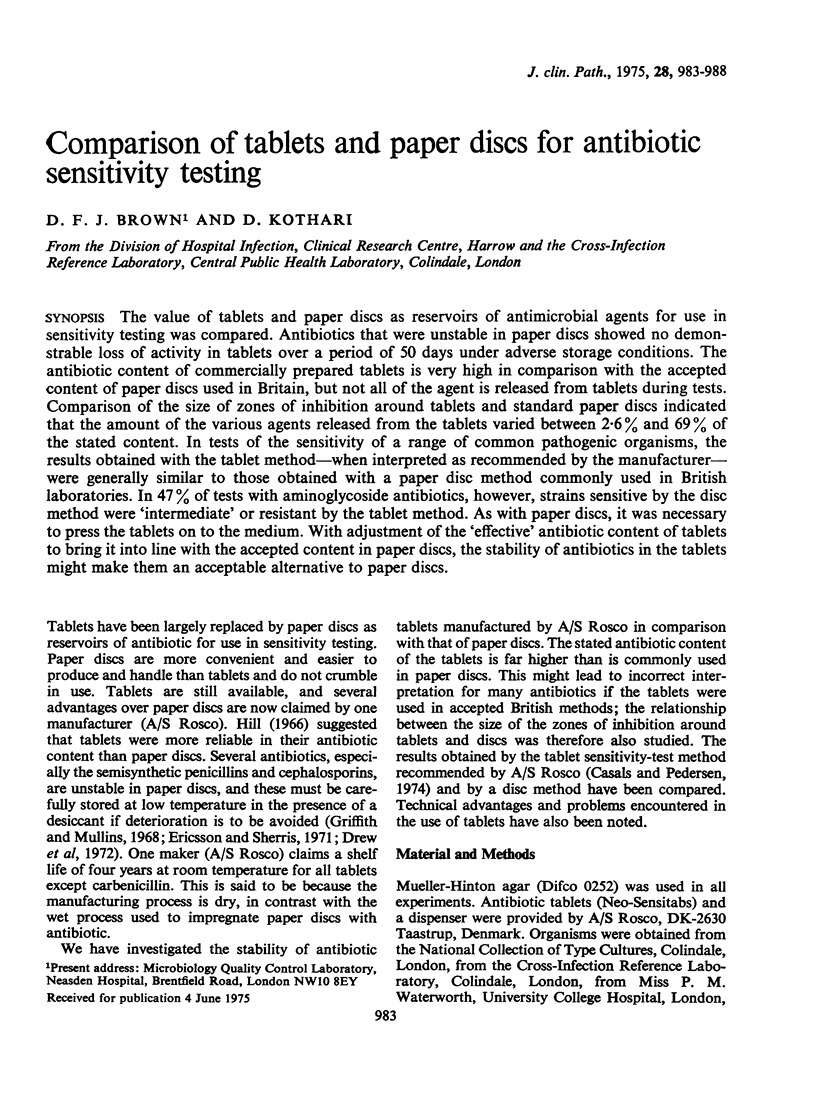

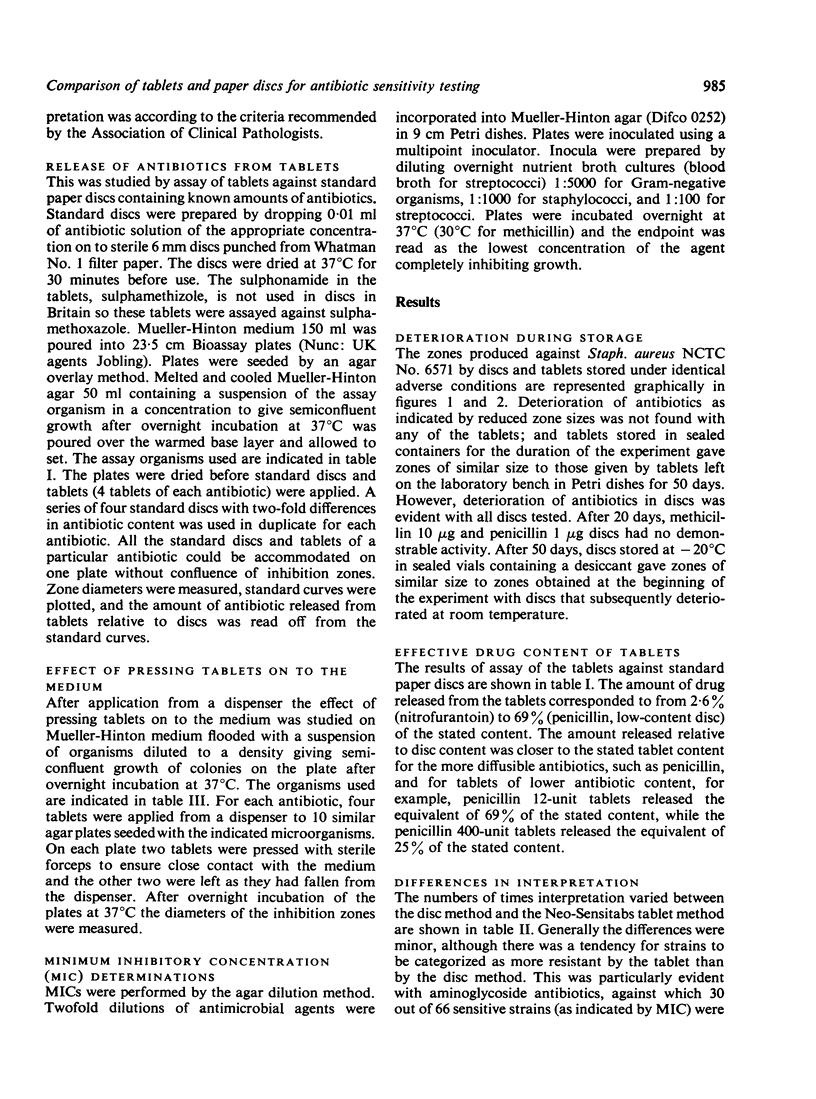
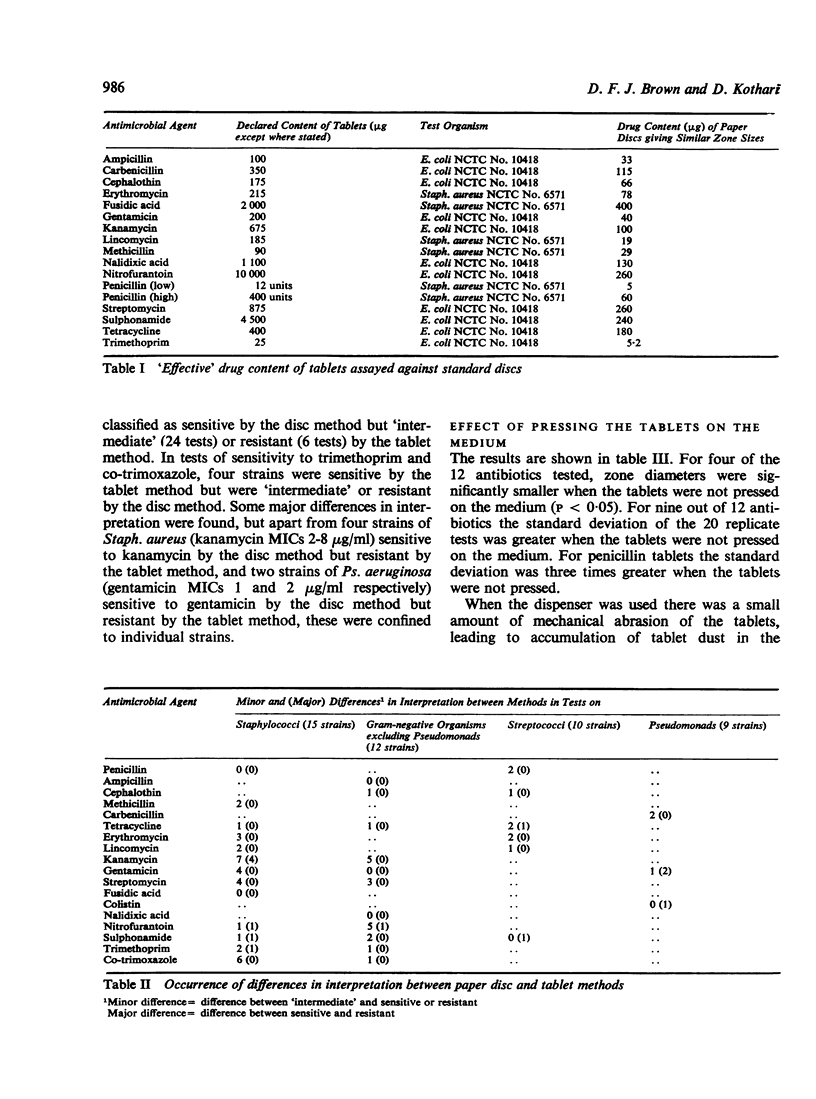
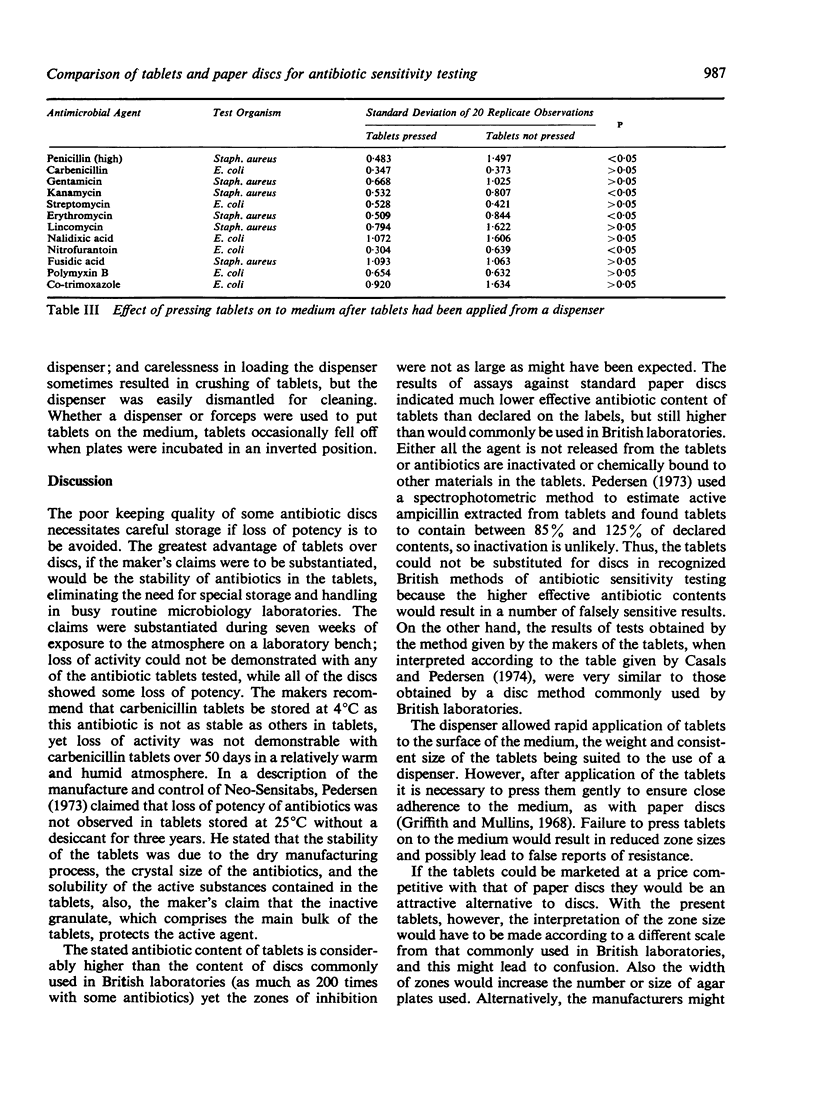
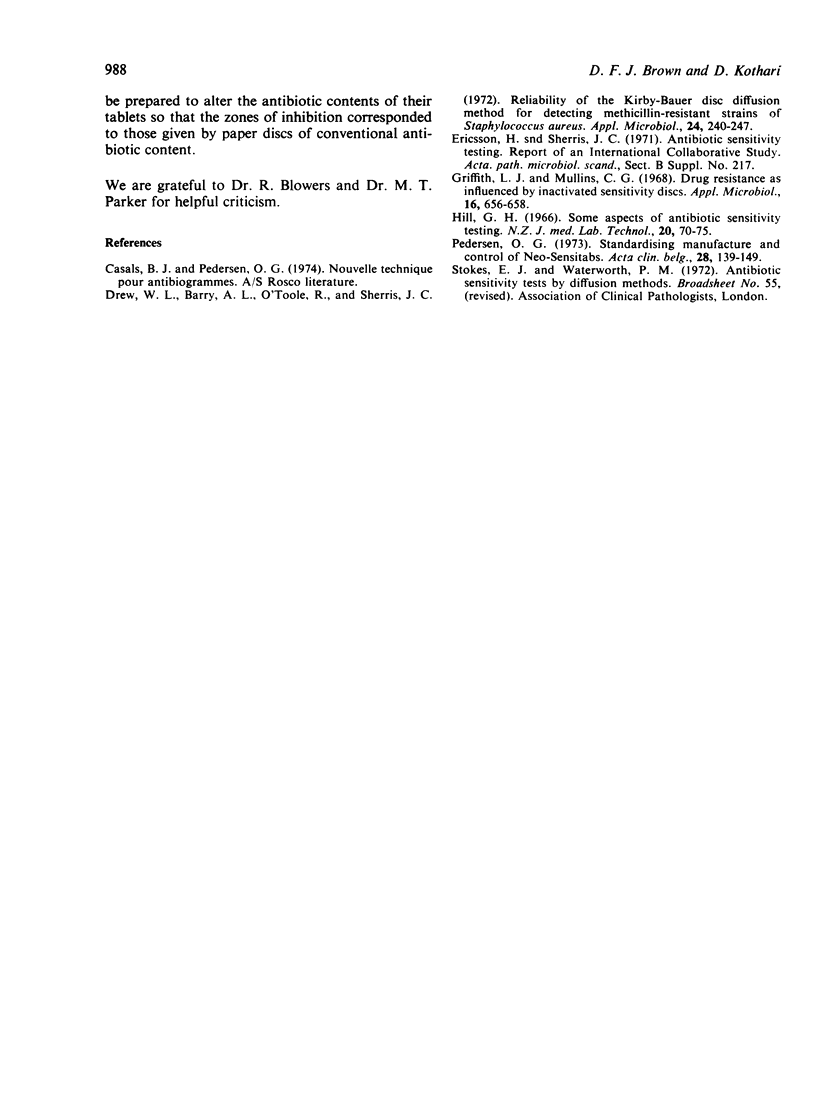
Selected References
These references are in PubMed. This may not be the complete list of references from this article.
- Drew W. L., Barry A. L., O'Toole R., Sherris J. C. Reliability of the Kirby-Bauer disc diffusion method for detecting methicillin-resistant strains of Staphylococcus aureus. Appl Microbiol. 1972 Aug;24(2):240–247. doi: 10.1128/am.24.2.240-247.1972. [DOI] [PMC free article] [PubMed] [Google Scholar]
- Ericsson H. M., Sherris J. C. Antibiotic sensitivity testing. Report of an international collaborative study. Acta Pathol Microbiol Scand B Microbiol Immunol. 1971;217(Suppl):1+–1+. [PubMed] [Google Scholar]
- Griffith L. J., Mullins C. G. Drug resistance as influenced by inactivated sensitivity discs. Appl Microbiol. 1968 Apr;16(4):656–658. doi: 10.1128/am.16.4.656-658.1968. [DOI] [PMC free article] [PubMed] [Google Scholar]
- Gylling Pedersen O. Standardising, manufacture and control of neo-sensitabs. Acta Clin Belg. 1973;28(3):139–149. doi: 10.1080/17843286.1973.11716866. [DOI] [PubMed] [Google Scholar]


